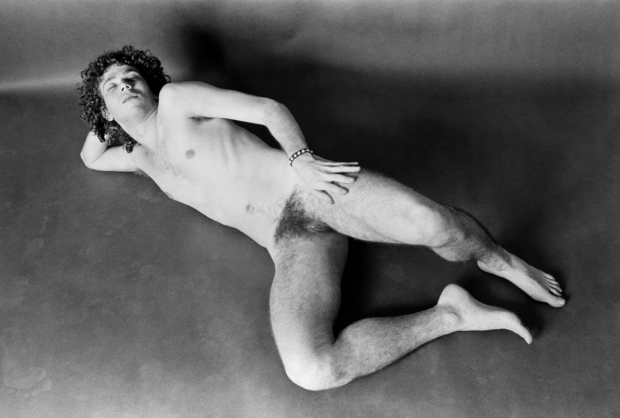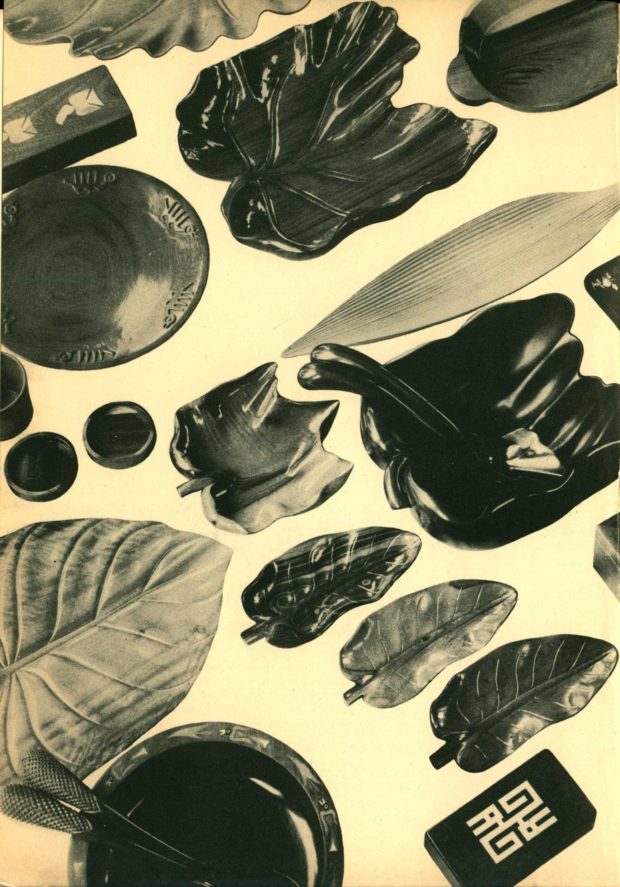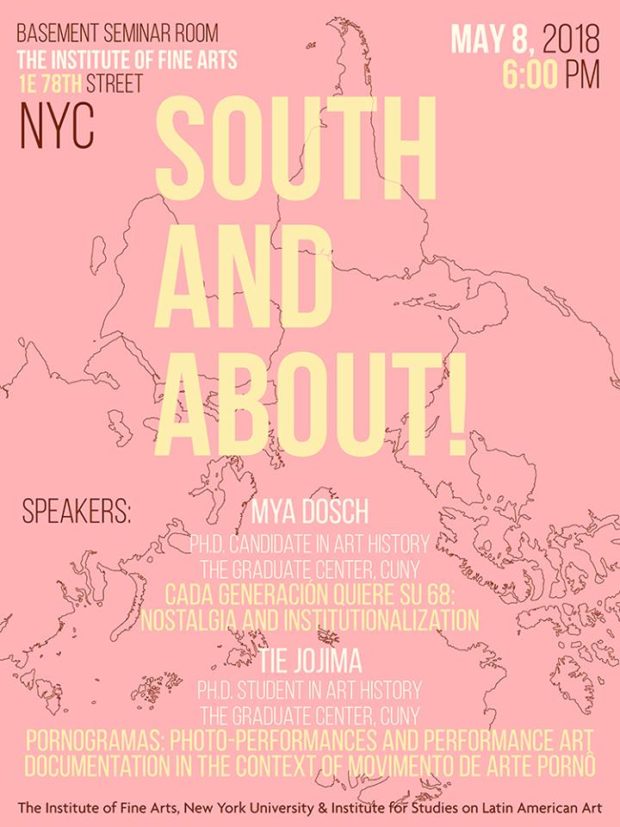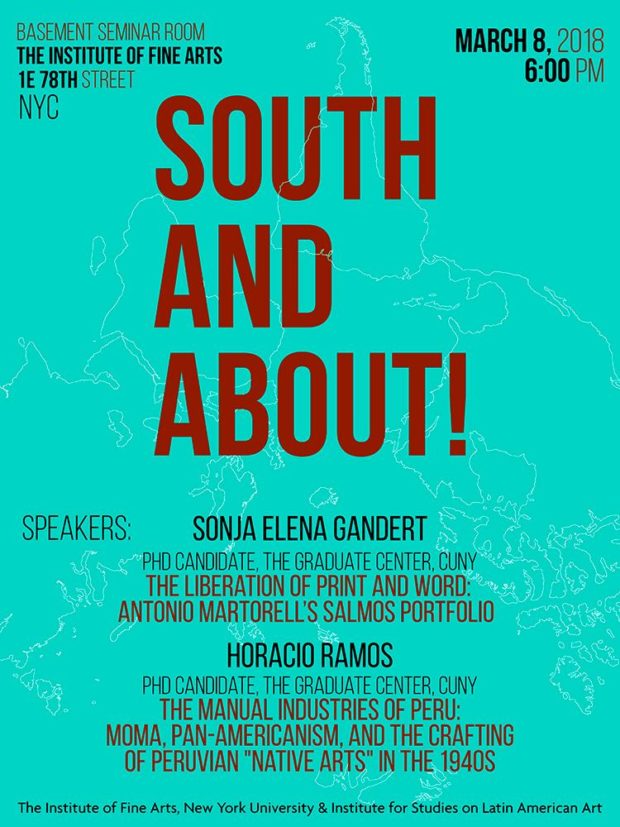South and About! Spring 2018
Tuesday, May 8th
Cada generación quiere su 68: Nostalgia and Institutionalization
Mya Dosch, Ph.D. Candidate in Art History, The Graduate Center, CUNY

In this new work, I consider several ephemeral, participatory artworks commissioned in 2008 by the Mexico City museum dedicated to the ’68 student movement. Drawing on Svetlana Boym’s theory of nostalgia, I show how the museum itself and Rafael Lozano-Hemmer’s much-lauded participatory work Voz Alta offer the student movement a triumphal return to Tlatelolco Square, the site of its violent repression. While Voz Alta has been flatly celebrated as a platform for free speech, I pay close attention to the aesthetics of this platform, showing that speech is foreclosed in a number of key ways. I argue that itinerant artworks by Ximena Labra and the collective Teatro Ojo, in contrast, refuse such a nostalgic homecoming. Instead, they wander, confronting the ambivalences, ironies and estrangements of nostalgia.
Pornogramas: photo-performances and performance art documentation in the context of Movimento de Arte Pornô
Tie Jojima, Ph.D. Student in Art History, The Graduate Center, CUNY

This paper investigates the series of nine photographs of Eduardo Kac titled Pornogramas [Pornograms] created from 1980 to 1982 during his participation in theMovimento de Arte Pornô in Rio de Janeiro. Pornograms, as suggested by the suffix “-grams,” are units of pornography. Borrowing from the logic of conventional pornography (the documentation of a staged sexual performance), Pornograms are the documentation of staged “porn art” performances. The specificity ofPornograms is that in their artistic ontology, they allowed experimentation with the codes of conventional pornography, in order to question and stage gender dynamics, power relations, literary politics, and bodily pleasure. In this paper, I will argue that these works, while restaging porn performances for the camera, also articulated a queer pornography that addressed porn as a discourse that has the potential to create new desires with the representation of multiple subjectivities. I will also argue that these works can be read as “text” (thus reinforcing the discursive nature of porn), and that they challenge the status of photography as performance documentation, as they would potentially enable a different kind of engagement from the viewer in terms of affect (bodily engagement versus reader-document relationship).
Thursday, March 8th
The Liberation of Print and Word: Antonio Martorell’s Salmos Portfolio
Sonja Elena Gandert, Ph.D. Student in Art History, The Graduate Center, CUNY
This presentation examines Puerto Rican artist Antonio Martorell’s 1971 woodcut portfolio Salmos, inspired by the eponymous collection of poetry by the Nicaraguan priest, poet, politician, and activist Ernesto Cardenal. Phrases extracted from Cardenal’s poems served as a point of departure for the images in the series; once printed, Martorell then hand-inscribed Cardenal’s text onto each sheet in elegant calligraphy. My analysis links the portfolio, both in terms of the circumstances of its creation and the modes of engagement it demands of the viewer, to both the rituals of Catholicism more generally and to ideas of Liberation Theology espoused by Cardenal and others. I contend that this interplay between the universal appeal of emancipation and Martorell’s allusions to specifically Puerto Rican concerns can help account for the portfolio’s enduring potency.
Originating as a seminar paper that considered the portfolio as a collective, this presentation’s objective is twofold: firstly, to continue to refine the theoretical framework and consider its potential applicability to other areas of Puerto Rican art; and secondly, to elicit further insights into the portfolio’s images on an individual basis. Ideally, these steps will in turn prove beneficial for preparing the paper for publication and/or further dialogue in conferences, etc.
The Manual Industries of Peru: MoMA, Pan-Americanism, and the Crafting of “Peruvian” Native Arts in the 1940s.
Horacio Ramos Cerna, Ph.D. Student in Art History, The Graduate Center, CUNY

This presentation will focus on the project “The Manual Industries of Peru,” developed in New York and Lima between 1942 and 1946. The project, conceived to be replicated in other Latin American countries, aimed at studying and preserving the “native traditions of the Americas,” building upon the idea of a shared Pan-American tradition between the U.S. and “its neighbors” south of the border. René d’Harnoncourt, who at the time worked both at the Inter-American Development Commission and at MoMA, organized this endeavor in dialogue with Peru’s leading artistic and political figures—José Sabogal and Víctor Raúl Haya de la Torre, among others. For four years, a team led by Truman Bailey developed research trips to Andean towns, established a workshop in Lima, and planned market venues in New York.
This presentation, still a work-in-progress, reflects on how images of Pan-Americanism, “native arts,” and “authenticity” were negotiated between U.S. and Peruvian cultural agents. More than offering definitive answers, the presentation will explore questions such as: How did U.S. institutions approach their “distant neighbors” in South America? What role did the artistic elite of Peruvian indigenistas played in this international exchange? More importantly, what was the place of Andean “native artists” in these cultural and political exchanges?

